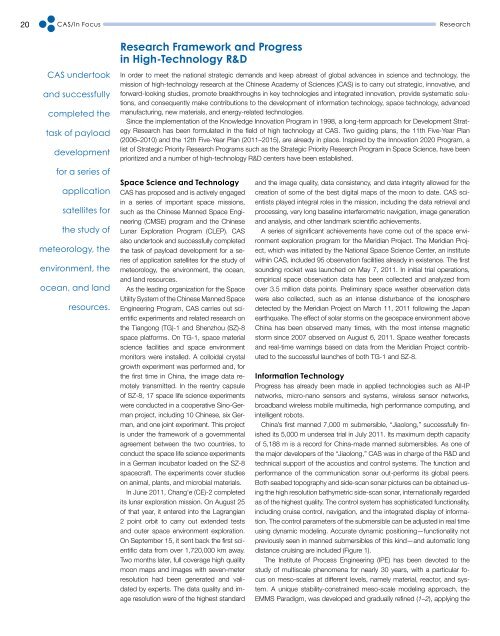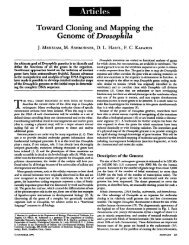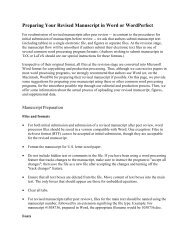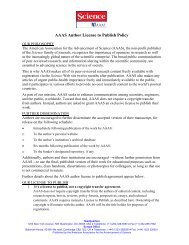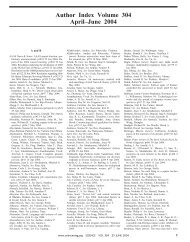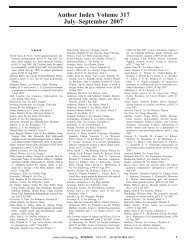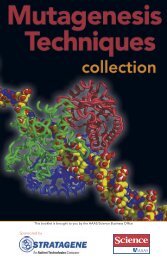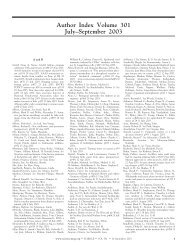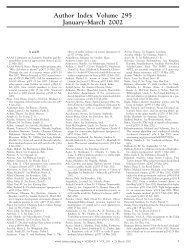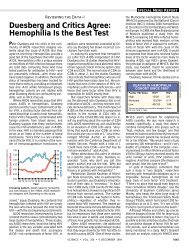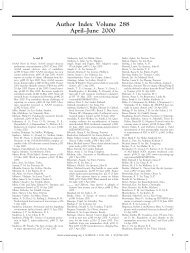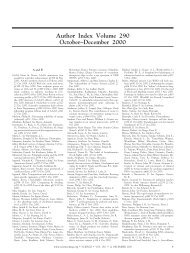Chinese Academy of Sciences (PDF) - low res version
Chinese Academy of Sciences (PDF) - low res version
Chinese Academy of Sciences (PDF) - low res version
Create successful ePaper yourself
Turn your PDF publications into a flip-book with our unique Google optimized e-Paper software.
20<br />
CAS/In Focus<br />
CAS undertook<br />
and successfully<br />
completed the<br />
task <strong>of</strong> payload<br />
development<br />
for a series <strong>of</strong><br />
application<br />
satellites for<br />
the study <strong>of</strong><br />
meteorology, the<br />
environment, the<br />
ocean, and land<br />
<strong>res</strong>ources.<br />
Research Framework and Prog<strong>res</strong>s<br />
in High-Technology R&D<br />
Space Science and Technology<br />
CAS has proposed and is actively engaged<br />
in a series <strong>of</strong> important space missions,<br />
such as the <strong>Chinese</strong> Manned Space Engineering<br />
(CMSE) program and the <strong>Chinese</strong><br />
Lunar Exploration Program (CLEP). CAS<br />
also undertook and successfully completed<br />
the task <strong>of</strong> payload development for a series<br />
<strong>of</strong> application satellites for the study <strong>of</strong><br />
meteorology, the environment, the ocean,<br />
and land <strong>res</strong>ources.<br />
As the leading organization for the Space<br />
Utility System <strong>of</strong> the <strong>Chinese</strong> Manned Space<br />
Engineering Program, CAS carries out scientific<br />
experiments and related <strong>res</strong>earch on<br />
the Tiangong (TG)-1 and Shenzhou (SZ)-8<br />
space platforms. On TG-1, space material<br />
science facilities and space environment<br />
monitors were installed. A colloidal crystal<br />
growth experiment was performed and, for<br />
the first time in China, the image data remotely<br />
transmitted. In the reentry capsule<br />
<strong>of</strong> SZ-8, 17 space life science experiments<br />
were conducted in a cooperative Sino-German<br />
project, including 10 <strong>Chinese</strong>, six German,<br />
and one joint experiment. This project<br />
is under the framework <strong>of</strong> a governmental<br />
agreement between the two countries, to<br />
conduct the space life science experiments<br />
in a German incubator loaded on the SZ-8<br />
spacecraft. The experiments cover studies<br />
on animal, plants, and microbial materials.<br />
In June 2011, Chang’e (CE)-2 completed<br />
its lunar exploration mission. On August 25<br />
<strong>of</strong> that year, it entered into the Lagrangian<br />
2 point orbit to carry out extended tests<br />
and outer space environment exploration.<br />
On September 15, it sent back the first scientific<br />
data from over 1,720,000 km away.<br />
Two months later, full coverage high quality<br />
moon maps and images with seven-meter<br />
<strong>res</strong>olution had been generated and validated<br />
by experts. The data quality and image<br />
<strong>res</strong>olution were <strong>of</strong> the highest standard<br />
Research<br />
In order to meet the national strategic demands and keep abreast <strong>of</strong> global advances in science and technology, the<br />
mission <strong>of</strong> high-technology <strong>res</strong>earch at the <strong>Chinese</strong> <strong>Academy</strong> <strong>of</strong> <strong>Sciences</strong> (CAS) is to carry out strategic, innovative, and<br />
forward-looking studies, promote breakthroughs in key technologies and integrated innovation, provide systematic solutions,<br />
and consequently make contributions to the development <strong>of</strong> information technology, space technology, advanced<br />
manufacturing, new materials, and energy-related technologies.<br />
Since the implementation <strong>of</strong> the Knowledge Innovation Program in 1998, a long-term approach for Development Strategy<br />
Research has been formulated in the field <strong>of</strong> high technology at CAS. Two guiding plans, the 11th Five-Year Plan<br />
(2006–2010) and the 12th Five-Year Plan (2011–2015), are already in place. Inspired by the Innovation 2020 Program, a<br />
list <strong>of</strong> Strategic Priority Research Programs such as the Strategic Priority Research Program in Space Science, have been<br />
prioritized and a number <strong>of</strong> high-technology R&D centers have been established.<br />
and the image quality, data consistency, and data integrity al<strong>low</strong>ed for the<br />
creation <strong>of</strong> some <strong>of</strong> the best digital maps <strong>of</strong> the moon to date. CAS scientists<br />
played integral roles in the mission, including the data retrieval and<br />
processing, very long baseline interferometric navigation, image generation<br />
and analysis, and other landmark scientific achievements.<br />
A series <strong>of</strong> significant achievements have come out <strong>of</strong> the space environment<br />
exploration program for the Meridian Project. The Meridian Project,<br />
which was initiated by the National Space Science Center, an institute<br />
within CAS, included 95 observation facilities already in existence. The first<br />
sounding rocket was launched on May 7, 2011. In initial trial operations,<br />
empirical space observation data has been collected and analyzed from<br />
over 3.5 million data points. Preliminary space weather observation data<br />
were also collected, such as an intense disturbance <strong>of</strong> the ionosphere<br />
detected by the Meridian Project on March 11, 2011 fol<strong>low</strong>ing the Japan<br />
earthquake. The effect <strong>of</strong> solar storms on the geospace environment above<br />
China has been observed many times, with the most intense magnetic<br />
storm since 2007 observed on August 6, 2011. Space weather forecasts<br />
and real-time warnings based on data from the Meridian Project contributed<br />
to the successful launches <strong>of</strong> both TG-1 and SZ-8.<br />
Information Technology<br />
Prog<strong>res</strong>s has already been made in applied technologies such as All-IP<br />
networks, micro-nano sensors and systems, wireless sensor networks,<br />
broadband wireless mobile multimedia, high performance computing, and<br />
intelligent robots.<br />
China’s first manned 7,000 m submersible, “Jiaolong,” successfully finished<br />
its 5,000 m undersea trial in July 2011. Its maximum depth capacity<br />
<strong>of</strong> 5,188 m is a record for China-made manned submersibles. As one <strong>of</strong><br />
the major developers <strong>of</strong> the “Jiaolong,” CAS was in charge <strong>of</strong> the R&D and<br />
technical support <strong>of</strong> the acoustics and control systems. The function and<br />
performance <strong>of</strong> the communication sonar out-performs its global peers.<br />
Both seabed topography and side-scan sonar pictu<strong>res</strong> can be obtained using<br />
the high <strong>res</strong>olution bathymetric side-scan sonar, internationally regarded<br />
as <strong>of</strong> the highest quality. The control system has sophisticated functionality,<br />
including cruise control, navigation, and the integrated display <strong>of</strong> information.<br />
The control parameters <strong>of</strong> the submersible can be adjusted in real time<br />
using dynamic modeling. Accurate dynamic positioning—functionality not<br />
previously seen in manned submersibles <strong>of</strong> this kind—and automatic long<br />
distance cruising are included (Figure 1).<br />
The Institute <strong>of</strong> Process Engineering (IPE) has been devoted to the<br />
study <strong>of</strong> multiscale phenomena for nearly 30 years, with a particular focus<br />
on meso-scales at different levels, namely material, reactor, and system.<br />
A unique stability-constrained meso-scale modeling approach, the<br />
EMMS Paradigm, was developed and gradually refined (1–2), applying the


